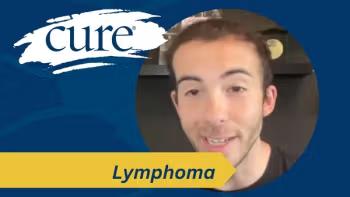Patients with stage 2B, 3 or 4 classical Hodgkin lymphoma tended to have better outcomes with an Adcetris (brentuximab vedotin)-based regimen known as BrECADD, compared with the intense chemotherapy regimen known as eBEACOPP, according to findings from the GHSG HD21 study.
Trial data, which showed that BrECADD improved progression-free survival (PFS; time from treatment until disease worsening or death), were presented at the 2024 American Society of Clinical Oncology Annual Meeting.
- A new treatment regimen called BrECADD may be as effective as the existing regimen called eBEACOPP but with fewer side effects. This is important because classical Hodgkin lymphoma typically affects young adults who have a long life expectancy.
- BrECADD includes the drugs Adcetris, etoposide, cyclophosphamide, doxorubicin, dacarbazine and dexamethasone.
- The existing treatment, eBEACOPP, includes bleomycin, etoposide, doxorubicin, cyclophosphamide, vincristine, procarbazine and prednisone.
- BrECADD resulted in a lower rate of treatment-related side effects compared to eBEACOPP.
The BrECADD regimen consisted of Adcetris, etoposide, cyclophosphamide, doxorubicin, dacarbazine and dexamethasone. The eBEACOPP had bleomycin, etoposide, doxorubicin, cyclophosphamide, vincristine, procarbazine and prednisone.
The eBEACOPP regimen is effective in treating classical Hodgkin lymphoma, but can drastically decrease patients’ quality of life, an expert said. Therefore, the team of researchers sought out to find an alternative that was as effective but better tolerated.
“Intensified chemotherapy offers better lymphoma control than less-intensive treatment. However, this comes at a cost of more short- and long-term treatment-related [side effects]. So [regarding] the risk-to-benefit ratio, [there is] efficacy in one hand and tolerability in the other,” study author, Dr. Peter Borchmann, of the University Hospital Cologne, Center for Integrated Oncology, said in a presentation of the data. “[Tolerability] is highly relevant in a young patient cohort with a high cure rate and a long life expectancy.”
Of note, Borchmann mentioned that the average age of diagnosis for classical Hodgkin lymphoma is approximately 30 years old.
GHSG HD21 is a phase 3 trial that was conducted in 233 treatment centers across nine different countries. The trial included 1,500 patients with classical Hodgkin (age range, 18 to 60) lymphoma who were randomly assigned to receive either two cycles of BrECADD or two cycles of eBEACOPP before undergoing PET scans (imaging scan to identify potential cancer spread)/CT (imaging to show a tumor’s size and shape) to determine if they had a complete metabolic response, which is when cancer cannot be seen on PET or CT scans. Patients who were PET2 negative (meaning that they did have a complete metabolic response) received two more cycles of the prescribed regimen, while those who were PET2 positive (meaning that they did not have a complete metabolic response) received four more cycles.
Findings showed that there was a lower rate of treatment-related morbidity (TRMB; defined as acute and severe toxicities related to treatment) in the BrECADD arm, at 42%, compared to the eBEACOPP arm, at 59%. This included:
- Reduction in red blood cell transfusions (24% versus. 52% for the BreCADD and eBEACOPP arms, respectively).
- Reduction in the platelet transfusions (17% versus 34%, respectively).
- Only 1% of patients experiencing severe sensory polyneuropathy (body-wide nerve damage), and no patients experiencing life-threatening side effects. Severe sensory polyneuropathy persisted after one year follow-up in one patient.
- Damage to reproductive organs fully recovered more frequently after four years in the BrECADD group than the eBEACOPP group in women (95.7% versus 73.4%, respectively) and men (86.6% versus 39.8%, respectively).
- Two out of 738 patients in the BrECADD group developed second primary myelodysplastic syndrome (MDS) or acute myeloid leukemia (AML).
Four-year overall survival (OS; time from treatment until death of any cause) was comparable between the two arms, at 98.5% with BrECADD and 98.3% with eBEACOPP.
At a median follow-up of 48 months, estimated four-year PFS was also superior in the BrECADD arm compared to the BEACOPP arm, at 94.3% and 90.9%, respectively.
The 48-month PFS rates for those who were PET2-negative after two cycles were 93% and 96.8% in the BEACOPP and BrECADD groups, respectively. For those who were PET2-positive, the 48-month PFS rates were 87.9% and 90.4%.
The four-year superiority observed with the BrECADD regimen was “unprecedented,” according to Borchmann.
“To conclude the overall risk-benefit ratio of PET2-guided individualized BrECADD is very good,” Borchmann said. “We therefore recommend BrECADD as a standard treatment option for advanced-stage classical lymphoma patients.”
For more news on cancer updates, research and education, don’t forget to subscribe to CURE®’s newsletters here.





